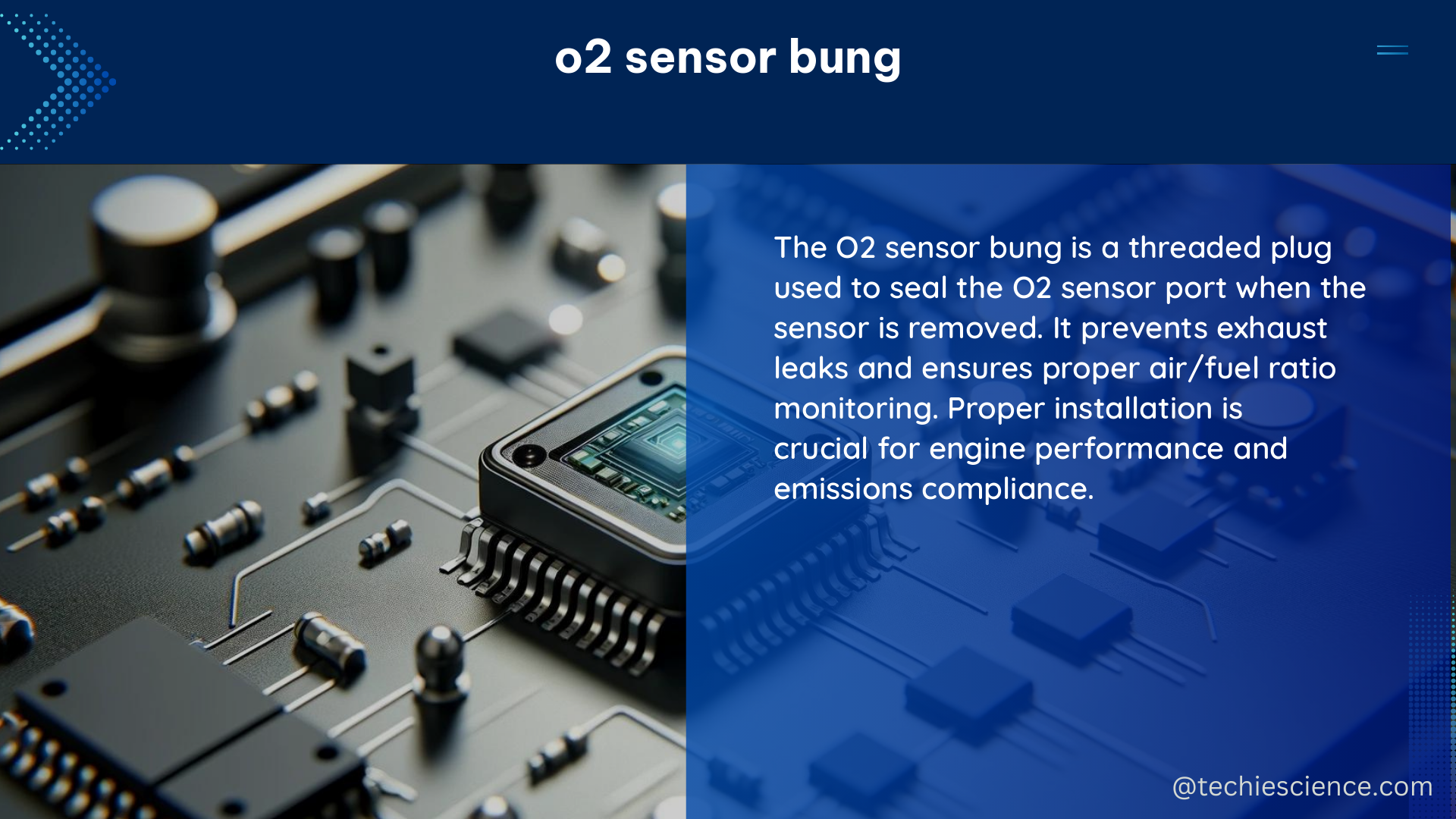The oxygen (O2) sensor bung is a critical component in the exhaust system of modern vehicles, particularly those equipped with catalytic converters. Its primary function is to monitor the amount of oxygen in the exhaust gases, ensuring the catalytic converter is operating efficiently. This comprehensive guide will delve into the technical specifications, installation process, and troubleshooting tips for O2 sensor bungs, providing a valuable resource for DIY enthusiasts and automotive professionals alike.
Understanding the O2 Sensor Bung
The O2 sensor bung is typically installed in the exhaust manifold or close to the catalytic converter, where it can accurately measure the oxygen content in the exhaust gases. This information is then relayed to the vehicle’s Engine Control Unit (ECU), which uses it to adjust the air-fuel ratio for optimal engine performance and emissions control.
The bung itself is designed to withstand the high temperatures and corrosive environment of the exhaust system. It is typically made of stainless steel and features a threaded design that allows for secure installation in the exhaust pipe.
Technical Specifications of O2 Sensor Bungs
The technical specifications of an O2 sensor bung can vary depending on the make and model of the vehicle, but some common specifications include:
| Specification | Typical Value |
|---|---|
| Thread Size | M18 x 1.5 |
| Bung Diameter | 10 mm |
| Bung Height | 12 mm |
| Material | Stainless Steel |
It’s important to note that these specifications may differ for specific vehicle applications, so it’s crucial to consult the manufacturer’s recommendations or refer to a reputable parts catalog when selecting the appropriate O2 sensor bung.
Installing an O2 Sensor Bung

Installing an O2 sensor bung requires some mechanical knowledge and experience. The process typically involves the following steps:
- Locate the Appropriate Installation Point: The bung should be positioned in the exhaust system, typically in front of the catalytic converter, to ensure accurate oxygen sensing.
- Prepare the Exhaust Pipe: The exhaust pipe must be cleaned and prepared for the welding process. This may involve grinding or sanding the surface to ensure a secure and leak-free weld.
- Weld the Bung in Place: The O2 sensor bung must be carefully welded into the exhaust pipe, ensuring a tight seal to prevent exhaust leaks. This step requires the use of appropriate welding equipment and techniques.
- Install the O2 Sensor: Once the bung is in place, the O2 sensor can be installed. It’s crucial to ensure the sensor is properly aligned and securely fastened to the bung, with the correct polarity.
It’s important to note that the installation process may vary depending on the specific vehicle and exhaust system configuration. It’s always recommended to refer to the manufacturer’s instructions or consult a professional mechanic if you’re unsure about the installation process.
Troubleshooting O2 Sensor Bungs
If you encounter issues with your O2 sensor bung, there are several troubleshooting steps you can take:
- Inspect the Bung for Damage: Check the bung for any signs of damage, such as cracks, corrosion, or loose threads. If the bung is damaged, it may need to be replaced.
- Test the O2 Sensor: Use a multimeter to test the output voltage and resistance of the O2 sensor. This can help identify any issues with the sensor itself, such as a faulty heating element or a wiring problem.
- Check for Exhaust Leaks: Ensure that the O2 sensor bung is properly sealed and there are no exhaust leaks around the installation point. Exhaust leaks can affect the accuracy of the oxygen sensor readings.
- Verify Sensor Positioning: Ensure that the O2 sensor is installed in the correct location, typically in front of the catalytic converter, to ensure accurate oxygen sensing.
By following these troubleshooting steps, you can identify and address any issues with your O2 sensor bung, ensuring optimal engine performance and emissions control.
Additional Resources
For more detailed information on O2 sensor bungs and their operation, consider the following resources:
- VW Vortex Forum Thread: DIY Oxygen Sensor Testing
- YotaTech Forum Thread: Rear O2 Sensor Trick
- Club Lexus Forum Thread: Potentially Increasing Power from Repositioning Downstream Oxygen Sensor
These forums provide valuable insights, troubleshooting tips, and DIY guides from experienced automotive enthusiasts and professionals.
Conclusion
The O2 sensor bung is a critical component in the exhaust system of modern vehicles, playing a crucial role in engine performance and emissions control. By understanding the technical specifications, installation process, and troubleshooting techniques, you can ensure your O2 sensor bung is functioning correctly and maintain the overall health of your vehicle’s exhaust system.
References:
– VW Vortex Forum Thread: DIY Oxygen Sensor Testing
– YotaTech Forum Thread: Rear O2 Sensor Trick
– Club Lexus Forum Thread: Potentially Increasing Power from Repositioning Downstream Oxygen Sensor

The lambdageeks.com Core SME Team is a group of experienced subject matter experts from diverse scientific and technical fields including Physics, Chemistry, Technology,Electronics & Electrical Engineering, Automotive, Mechanical Engineering. Our team collaborates to create high-quality, well-researched articles on a wide range of science and technology topics for the lambdageeks.com website.
All Our Senior SME are having more than 7 Years of experience in the respective fields . They are either Working Industry Professionals or assocaited With different Universities. Refer Our Authors Page to get to know About our Core SMEs.